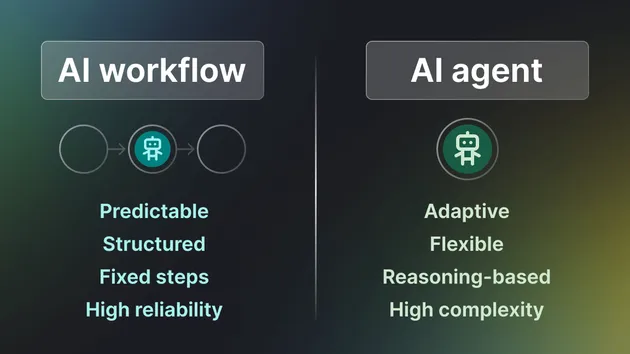Dataset Query Engine
Pricing
Pay per usage
Dataset Query Engine
Use natural language queries to retrieve results from an Apify dataset. This Actor provides a query engine that loads a dataset, executes SQL queries, and synthesizes results.
Pricing
Pay per usage
Rating
4.6
(5)
Developer

Jiří Spilka
Actor stats
5
Bookmarked
20
Total users
1
Monthly active users
9 months ago
Last modified
Categories
Share
This Actor allows you to use natural language to query and retrieve results from an Apify dataset. It provides a query engine that loads a dataset, executes SQL queries against the data, and synthesizes results.
🎯 How to use the dataset query engine?
If you have a dataset scraped using any Apify Actor, you can easily extract relevant insights from it.
For example, if you use the Google Maps Email Extractor to search for "the best pizza in New York," you’ll get a dataset containing contact details and restaurant information.
With the query engine, you can ask questions like:
The Actor will respond with:
This makes it easy to extract useful data without manually filtering through large datasets. 🚀
🛢 How does the query engine work?
The query engine operates using two configurable approaches: AI Agent or Agentic workflow. While the AI Agent provides flexibility and autonomous reasoning, the Agentic Workflow ensures predictable and controlled processing. The choice is determined by the useAgent parameter.
AI Agent using LlamaIndex ReAct Agent
When useAgent is set to true, the system employs the ReAct (Reasoning and Acting) framework.
In this mode, the agent works autonomously and interprets the user's query and determines the optimal strategy to achieve the desired outcome.
It utilizes a set of tools, such as is_query_sql, user_query_to_sql, execute_sql, and synthesize_results, to process the query.
The agent decides which tools to use and in what sequence.
Agentic Workflow
When useAgent is set to false, the system follows a predefined, deterministic workflow.
In this mode, the user's query is processed through a fixed sequence of steps.
This approach ensures predictable outcomes.
Workflows chain together several events (tools) and follow a predefined flow.
They consist of individual steps, with each step designed to process specific event types and generate subsequent events.
Tools
load_dataset(dataset_id, refresh_dataset=False)– Loads a dataset from Apify into DuckDB, extracts schema, and maps SQL types to Python.is_query_sql(query)– Detects if a query is in SQL using regex.user_query_to_sql(query, table_name, table_schema)– Converts natural language to SQL using LLM.execute_sql(sql_query)– Runs an SQL query in DuckDB and returns results.synthesize_results(query, sql_query, db_results, table_schema)– Generates a human-readable response from SQL results using LLM.
⚙️ Usage
Actor can be used in two ways: as a standard Actor by passing an input, or in Standby mode via an HTTP request.
Normal Actor run
You can run the Actor "normally" via the Apify API, schedule, integrations, or manually in the Apify Console.
On start, you provide an input JSON object with settings, such as query and datasetId.
The Actor loads the dataset into DuckDB (in-memory) and uses it to generate an answer.
The disadvantage of this approach is that for every subsequent run, the dataset needs to be reloaded into memory, which adds overhead.
Additionally, starting a Docker container takes time, and the Actor can handle only one query at a time, making it inefficient for high-frequency queries.
Standby web server
The Actor supports Standby mode, where it runs an HTTP server that processes queries on demand. This mode eliminates the need to reload the dataset for each request and removes container startup time.
To use the Dataset query engine in Standby mode, send an HTTP GET request to:
where <OPENAI_API_KEY> is your OpenAI API Key, and <APIFY_API_TOKEN> is your Apify API Token.
Alternatively, you can pass the Apify token using the Authorization HTTP header for improved security.
The response is a JSON object containing the query results.
Query parameters
The / GET HTTP endpoint supports the following parameters:
| Parameter | Type | Default | Description |
|---|---|---|---|
query | string | N/A | SQL query or a natural language query. If a natural language query is provided, it is converted to SQL before execution. |
datasetId | string | N/A | The ID of the dataset to query. |
modelName | string | gpt-4o-mini | Specifies the LLM for SQL generation and query synthesis. Currently supports OpenAI models. |
refreshDataset | boolean | false | If enabled, reloads the dataset to ensure updated data is available. |
limit | integer | No limit | Maximum number of items to return. |
offset | integer | 0 | Number of items to skip before returning data. |
useAgent | boolean | true | Enables AI-powered query handling instead of a deterministic workflow. The AI Agent can handle more tasks but may be less reliable. |
🔌 Integration with LLMs
Dataset query engine has been designed for easy integration with LLM applications, GPTs, and Model Context Protocol.
OpenAPI schema
Here you can find the OpenAPI 3.1.0 schema.
The schema includes all available query parameters, but only query and datasetId are required.
You can omit other parameters if their default values are suitable for your application.
OpenAI GPTs
You can add the Dataset query engine to your GPTs by creating a custom action. Here's a quick guide:
- Go to My GPTs on ChatGPT website and click + Create a GPT.
- Complete all required details in the form.
- Under the Actions section, click Create new action.
- In the Action settings, set Authentication to API key and choose Bearer as Auth Type.
- In the schema field, paste the OpenAPI 3.1.0 schema
Learn more about adding custom actions to your GPTs with Apify Actors on Apify Blog.
Anthropic: Model Context Protocol (MCP) Server
The dataset query engine can also be used as an MCP server and integrated with AI applications and other AI agents, such as Claude Desktop.
You can integrate it using Apify's Actors MCP Server. Simply provide query, datasetId.
To use it, start the Actors MCP Server with the Dataset query engine included in the list of available Actors.
- For deployment on the Apify platform, follow the Standby mode setup.
- For running the Actor locally over stdio, refer to the Claude Desktop setup.
💰 Pricing
This Actor uses the Pay Per Event (PPE) model for flexible, usage-based pricing. It currently charges for Actor start and a flat fee per task completion.
| Event | Price (USD) |
|---|---|
| Actor start | $0.05 |
| Query completed | $0.01 |
👷🏼 Development
The dataset query engine Actor has open source available on GitHub, so that you can modify and develop it yourself. Here are the steps how to run it locally on your computer.
Download the source code:
Install dependencies:
Setup input arguments in actor-dataset-query-engine/storage/key_value_stores/default/INPUT.json
And then you can run it locally using Apify CLI as follows:


